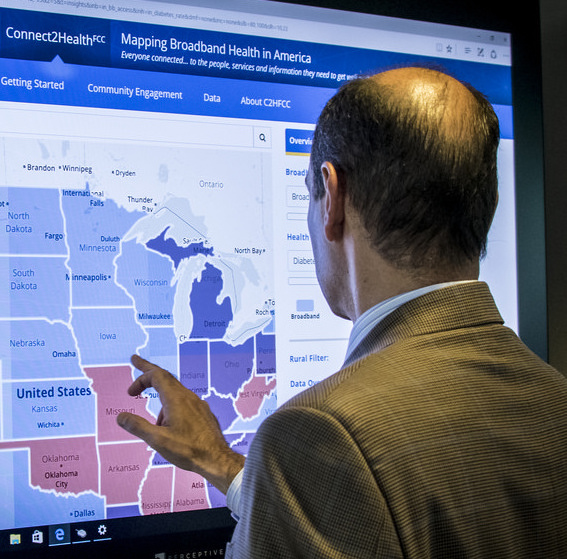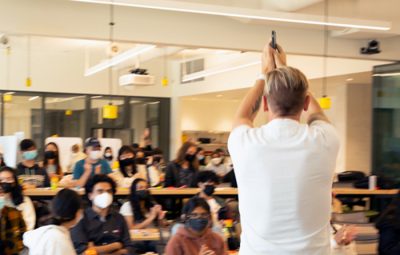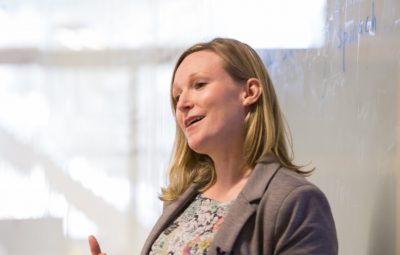The Federal Communications Commission’s Connect2Health Task Force (C2HFCC) announced last week that the FCC and the National Cancer Institute (NCI) have joined forces, signing a memorandum of understanding to focus on how increasing broadband access and adoption in rural areas can improve the lives of rural cancer patients.
As an inaugural project under the memorandum of understanding, the agencies have convened a public-private consortium to help bridge the broadband health connectivity gap in Appalachia, taking another concrete step toward closing the digital divide. The University of California San Diego Design Lab will lead coordination and intervention development for the consortium, partnering with the UC San Diego Moores Cancer Center, the University of Kentucky’s Markey Cancer Center and Amgen.
According to the Centers for Disease Control and Prevention, Americans living in rural areas are still more likely to die of cancer than their counterparts in urban settings, which sets them apart from the many communities nationwide that have experienced a 20 percent decrease in cancer mortality over the past two decades. Initial analysis of broadband data and cancer data shows that these rural “cancer hotspots” also face major gaps in broadband access and adoption, often putting promising connected care solutions far out of reach.
In Appalachia, the cancer picture is bleaker than in other rural parts of the country. Research from University of Virginia School of Medicine has shown that between 1969 and 2011, cancer incidence declined in every region of the country except rural Appalachia, and mortality rates soared.
“The quality, length and even value of life should not be determined by where you happen to be born or live,” said Michele Ellison, Chair of the Connect2HealthFCC Task Force. “And yet that’s exactly what’s happening. Nowhere is this more acutely felt than in the rural parts of our country. Too many rural Americans suffer with late cancer diagnoses, unrelenting symptoms, and inadequate access to care.”
The project—titled L.A.U.N.C.H. (Linking & Amplifying User-Centered Networks through Connected Health): A Demonstration of Broadband-Enabled Health for Rural Populations in Appalachia—will target areas that face the dual challenge of higher cancer mortality rates and lower levels of broadband access. The initial geographic focus is planned for rural Kentucky. Highlighting the power of public-private collaborations, current project stakeholders include cancer experts, researchers, technologists and industry representatives from the University of Kentucky Markey Cancer Center (a NCI-designated cancer center), Amgen and the UC San Diego Design Lab.
Members of the UC San Diego team are led by Eliah Aronoff-Spencer, a professor in the UC San Diego School of Medicine, and include Design Lab Director Don Norman (a professor emeritus in the UC San Diego Department of Cognitive Science) as well as Prof. Kevin Patrick, Adjunct Prof. Jacqueline Kerr and Prof. Elena Martinez, all of the UC San Diego department of Family Medicine & Public Health. Aronoff-Spencer, Norman and Patrick are members of the Design Lab and all team members are affiliates of the UC San Diego Qualcomm Institute, where the Design Lab is based.
Dr. Aronoff-Spencer points out that “The Design Lab’s approach — Human-Centered Design — is especially well suited for the complex sociotechnical issues involved in healthcare in rural, underserved areas of the country. We start with observational studies and quantitative data fusion which drives mutual development of new procedures and technologies that can be prototyped, tested, integrated and further refined until they are ready to be deployed with our partners.”
“Through this strategic collaboration, we will work to bring the critical connectivity piece to the cancer puzzle,” continued Ellison. “Increasingly, broadband-enabled technologies are transforming the way cancer patients and survivors better manage, monitor, and treat their symptoms — helping them to live longer, better quality lives. But for rural Americans with limited access to broadband, many of these connected care solutions are unavailable. Better connectivity holds the promise of bringing first class care and treatment to anyone, anywhere.”

“Research suggests that when patients report symptoms electronically to their care providers they are almost twice as likely to report improvements to health-related quality of life than those in a disconnected control group,” said Bradford Hesse, Ph.D., Chief, Health Communication and Informatics Research Branch, National Cancer Institute. “Electronically connected patients were also less likely to be admitted to the emergency room and had greater survival rates than patients in the control group. Collaborating with the FCC is a vital step for improving cancer outcomes for all Americans, regardless of where they live.”
The President’s Cancer Panel report, Improving Cancer-Related Outcomes with Connected Health, specifically urged more cross-sector collaboration among those in the healthcare, biomedical research, and technology fields as essential to the future of cancer care. Consistent with this blueprint, the multi-year, cross-sector L.A.U.N.C.H. project will focus on how broadband connectivity can be leveraged to improve symptom management for rural cancer patients, presenting a compelling case for greater deployment and adoption of broadband in rural areas. Symptom management is one of the key priorities of the 2016 Blue Ribbon Panel, a group of scientific experts created to advise the National Cancer Advisory Board.
Additional information about the FCC-NCI memorandum and the broadband health demonstration project will be available online at https://www.fcc.gov/health/cancer. Information about “critical need” counties at the intersection of broadband and health is available at https://www.fcc.gov/health/maps/priority-and-ruralpriority-2017.
The Connect2HealthFCC Task Force also encourages all stakeholders interested in broadband health projects for other critical need areas ― including fixed or mobile broadband providers, health technology companies, device manufacturers, and health care facilities ― to contact the Task Force via e-mail at engageC2H@fcc.gov. It would be useful for stakeholders to include information about broadband health needs and opportunities in particular critical need areas and offer concrete proposals on how they are seeking to address them via public-private partnerships or other models.






